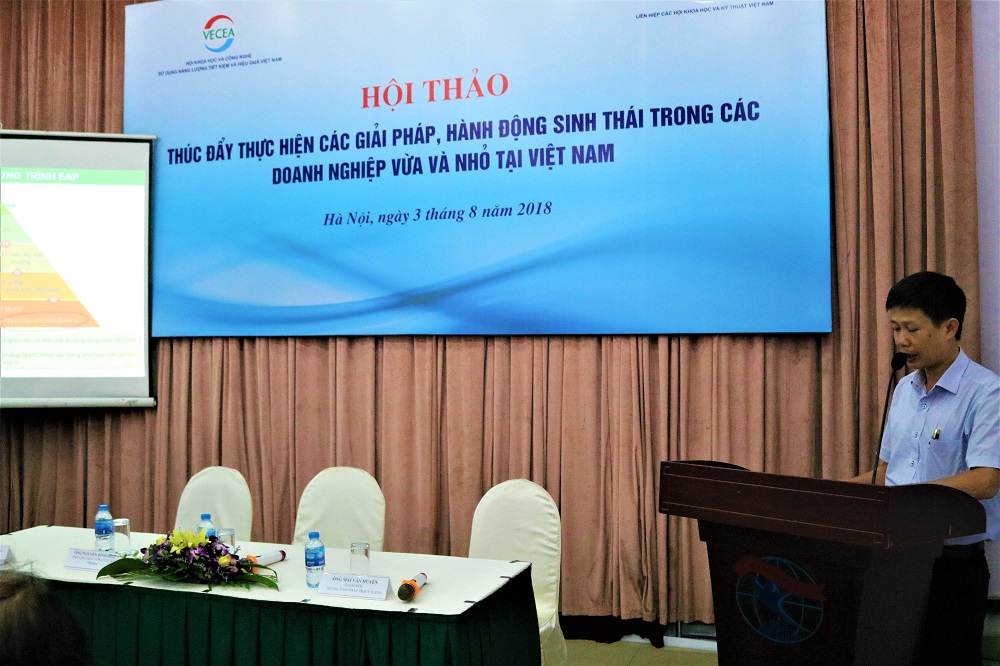What is EAP?
At the opening speech, Mr. Nguyen Dinh Hiep – Vice President, General Secretary of VECEA (Vietnam Energy Conservation and Energy Efficiency Association) said that EAP is the Eco-Action Program, that was originated from Japan. The Program is developed based on Ecological Action Guideline 21 (EA21). The EAP guides small and midsize enterprises towards efficient use of energy and minimizes greenhouse gas emissions
EAP can be understood as a form of Environmental Management System (EMS) that is built to suit small and medium enterprises in which cost savings are emphasized. Because of the small size of the business, EAP conducts very detailed and cost-effective solutions. With the goal of providing and disseminating the basic knowledge of EAP, promoting and replicating the EAP model nationwide, step by step change the awareness – building a sense of well-being, combining economic objectives and ecological targets in the production and business of enterprises.
In Japan, many large enterprises determine that an environmental management system is one of their basic conditions when entering into a transaction and also, they are required to have this condition when transacting. The import of goods also requires importing from enterprises having environmental management system. EA21 participating units will be evaluated and certified by the 3rd intermediary agency so that the prestige of the unit will be improved in the social aspect. The environmental reports of the unit will be published outside so the prestige of the unit will be enhanced for consumers.
How to strongly promote EAP?
According to Mr. Mai Van Huyen – Director of Green Development Center (GreenDC), EAP has been introduced and applied in Vietnam since 2013 within the framework of the Joint Credit Program (JCM). Three cities have implemented this model: Ho Chi Minh City, Da Nang, Hanoi. By 2014, the number of participants is up to nearly 50 enterprises. Typically, Legamex Corporation that participated in EAP has reduced 90% of CO2; 19% -78% of solid waste due to a series of solutions: Sorting garbage; Installing electricity meters to monitor power indicators of each unit; improvement of lighting system; use power saver for sewing machines and specialized machines; using high performance motors, insulating for glue pressor, insulating steam pipes for ironing machines; monitoring monthly fuel norms, regular engine maintenance
Implementation of EAP contributes to improve business credibility; Satisfying customer requirements; Comply with environmental legislation and especially easy to implement environmental management in small and medium enterprises at low cost.

Actually, last year, the number of enterprises interested and participated in EAP have increased. It can be seen that the awareness of the small-medium enterprises (SME) community about applying of EAP are increase, which means that the entering of EAP has increased in the SME community. The next good news is that VECEA and ECC Ho Chi Minh have been restarting EAP in major cities. That confirms the important role that EAP plays in this small business type.
However, in order to enhance EAP to the SME community, marketing and communication activities should be promoted to small and medium enterprises. Develop and recommend incentive mechanisms for small and medium enterprises to participate in the program. Create pilot demonstration models.
In the context of the limited implementation of the responsibility for environmental protection and rational use of natural resources by the SME community, the incentive to implement the EAP model in enterprises will have many benefits such as reduce greenhouse gas emissions, reduce water pollution, save costs …
Green Development Center.






